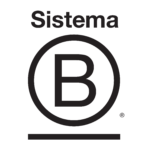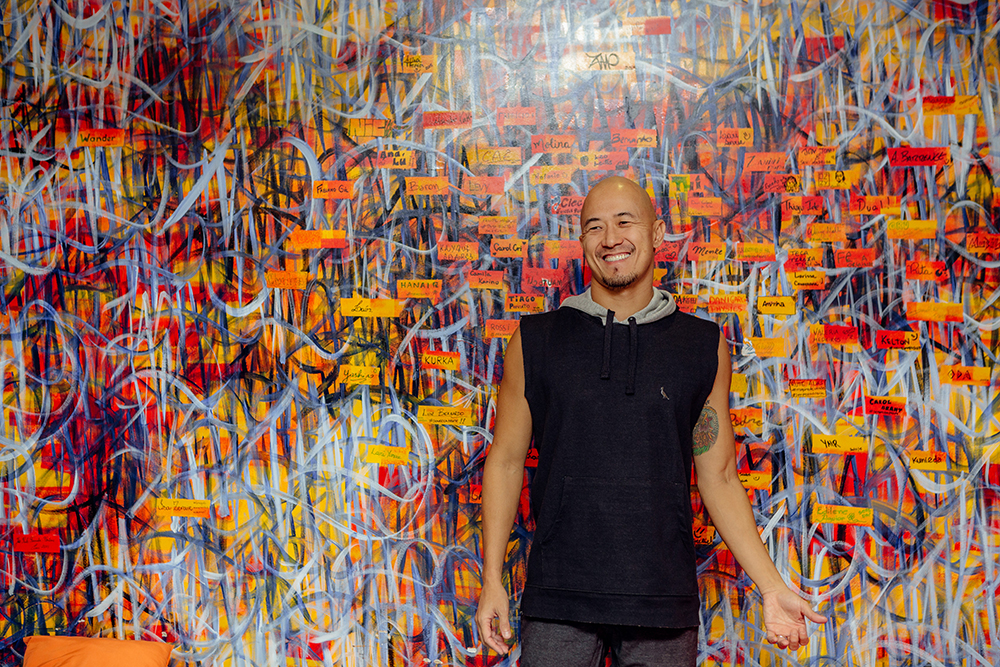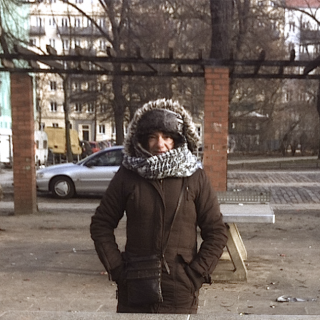Seeking a school where his eldest daughter, Yasmin, could learn according to her rhythm, interests and challenges, Claudio Sassaki discovered a dilemma that challenged him. He could find an institution that would fit her needs. But, how about the children attending public schools (more than 80 percent of Brazilian kids) and lacking Yasmin’s choices? “Opportunities, safety and quality of my children’s lives are directly linked to those offered to others of their generation,” he says. Because of these convictions, he decided to leave his successful career in the financial markets and become an entrepreneur.
With Eduardo Bontempo, whom he met while working in the United States, Sassaki founded Geekie, an education platform that identifies each student’s needs and the context of their lives. It also supports teachers and schools with curriculum materials. Geekie has at this writing served more than 5 million students from public and private schools, in 99 percent of Brazilian cities.
Sassaki, who graduated in architecture, spent ten years at Credit Suisse Bank, where he became a vice president. Bontempo, for his part, graduated in business administration and worked for the same financial institution. The two shared concerns about their careers and a desire to make a difference in society. They decided to enter the education sector, and Geekie launched in 2011, proposing to use technology to democratize access to quality education. In 2014, the platform received certification from B System, an organization that recognizes companies with responsible social and environmental practices.
At the end of the school year, Sassaki talked with Believe.Earth about the challenges of technology in education.
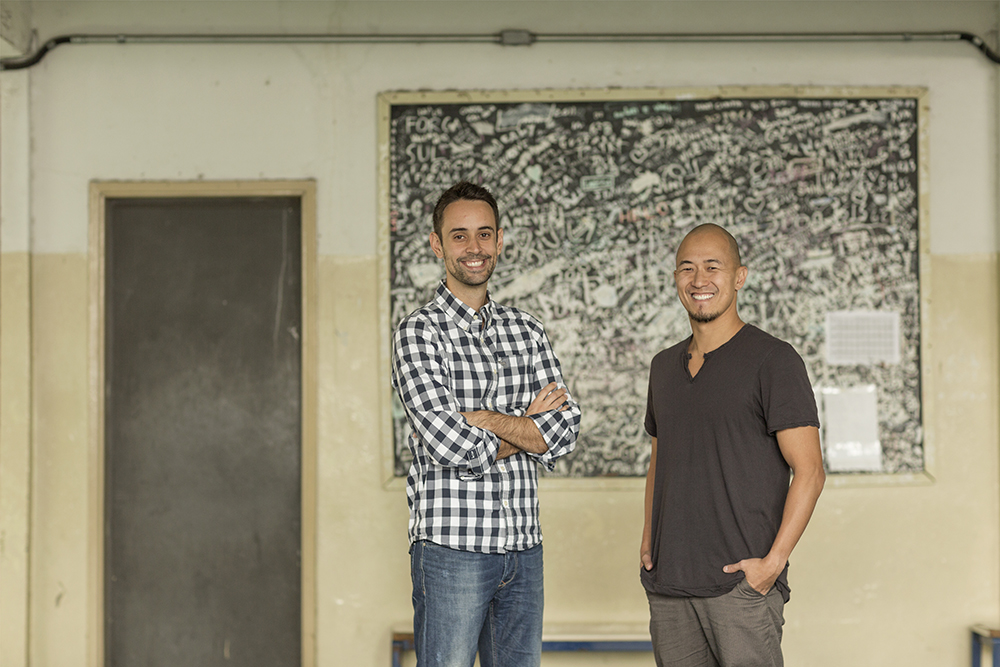
Eduardo Bontempo (left) joined Claudio Sassaki to create Geekie (Renato Stockler/ Na Lata)
Believe.Earth (BE) – There is much talk about the use of technology in the classroom, but this idea is not always associated with changing the way we teach and learn. How can technological resources actually improve education?
Claudio Sassaki (CS) – One of the ways in which the educational process is enhanced is when the educator assumes the role of mediator of knowledge, using technology as a pedagogical resource, inside and outside the classroom. In the classroom, he can use active teaching methodologies. Outside of it, he can guide students to watch video classes. We’ve noticed on a daily basis, and through our studies, that technology helps children and young people learn. For two years, researchers from the teaching nucleus of UNESP [Paulista State University] of Araraquara, in the interior of São Paulo, followed the performance of 400 2nd and 3rd year high school students from eight different classes of Bento de Abreu Public School. During this period, mathematics and physics classes were divided into purely expository classes and those engaged in electronic games, animations and simulations. The results were released in 2013 and showed that the use of educational technology improved students’ achievement in both subjects by 32 percent. The lowest-performing students benefited especially, improving their performance by 51 percent in both subjects.
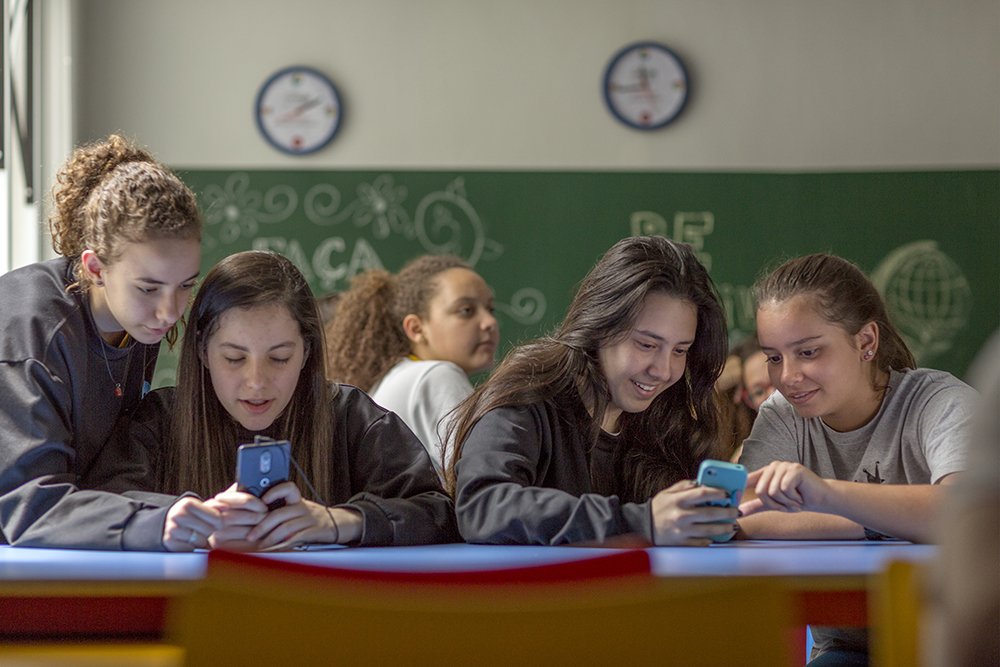
Students in a São Paulo school, engaged in personalized learning through Geekie tools (Renato Stockler/Na Lata)
BE – Is the traditional classroom model coming to an end?
CS – A study from the Oxford University [in the UK] shows that 47 percent of jobs in the United States will be replaced by artificial intelligence in the coming years. Another study, this one by Ernst & Young, reveals that success is not necessarily linked to what you know, but rather to how you can interpret, analyze, and connect information. An education accompanied by innovation is the one that will understand these challenges and be able to educate the next generations. We have an educational system in which exams and blackboards are still needed, but it is clear that innovation is directly linked to new paradigms.
BE – What kind of education does the world need nowadays?
CS – Education must respect the students’ singularities and this is not only linked to school. Knowledge we can get at home and what we learn at school are complementary and both are necessary. Values are critical to changing and improving the world, but we need people with deep and critical insights, communication skills, leadership, and modesty about their talents. These skills can be developed and reinforced at school.
BE – In Brazil, more than a quarter of high school students do not graduate. Many even drop out of high school school after spending as long as three years there. The main cause is the lack of interest in what is taught. How can the education system adapt its content to young people’s reality?
CS – I believe that one way is to embrace each student’s individuality. From that point on, you’re able to achieve meaningful learning, be connected to their reality and contribute to the formation of a young person ready for the challenges of the future. Let’s think about the concept of adaptive education that technology provides: Students access classes, do homework and, as long as they interact with the content, according to their level, their mistakes and their successes, they’ll receive an individual and customized study plan, allowing them to create their own learning routine. This study process is updated by teachers, school and the use of multimedia resources.

Teachers in a São Paulo school. Geekie saves teachers 20 hours of class preparation per month (Renato Stockler/Na Lata)
BE – How do you bring quality education to low-income youth from public schools?
CS – Our first step was to adopt the one pay one free model, it means, for each private school to purchase the platform, we’d offer the same solution for free to a low-performing public school (as measured by Ideb [Basic Education Development Index], a Brazilian system for tracking education outcomes). After some time, this model has evolved, and, with the support of other institutions, we have diversified our way of reaching those most in need. In 2012, Geekie was adopted by the ten schools that took part in Ginásios Experimentais Cariocas [Experimental Schools of Rio de Janeiro], a city program. With the full implementation of technological education, which includes our solutions, student performance improved 154 percent, according to Ideb. Another example is Hora Enem [High School National Exam] launched in 2016 by MEC [Ministry of Education] in partnership with Sesi [Industry Social Service]. Geekie Games was chosen as the official platform for simulations, exercises and video classes to prepare students for Enem, reaching 4.5 million young people.
BE – Based on the stories of students who have overcome difficulties by using some Geekie tool, which one do you most admire?
CS – One of our favorite stories is that of Manoel, a young man from a humble family in Icó, a city located 385 kilometers [about 239 miles] from Fortaleza, Ceará. Manoel and Geekie’s paths crossed in 2013, when the state government decided to adopt Geekie Games as part of the official Enem program. Manoel studied for up to 14 hours a day on the platform. He did well at the day of the exam. He got a full scholarship at the famous Biomedical Sciences course at Faculdade Maurício de Nassau through ProUni [Academic Program for All People]. He became the only one in his family, including his 50 cousins, to attain higher education.
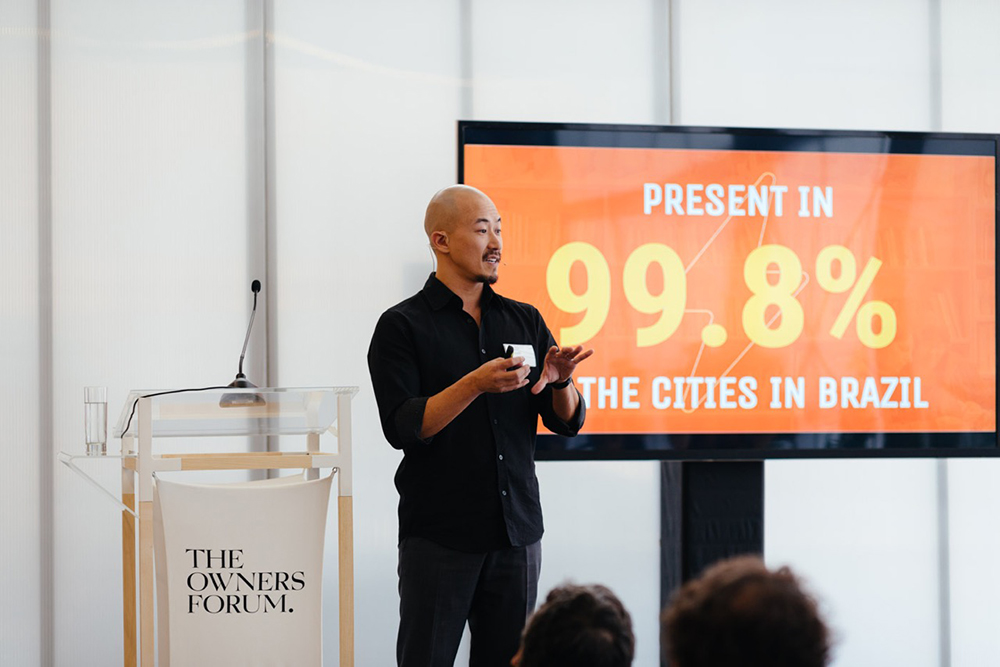
Sassaki speaking at The Owners Forum, a global event for entrepreneurs held in Brazil in 2017 (Geekie)
BE – When you had the idea of creating a social business, did you already have a model of education that you identified with?
CS – Since college, I had been involved with education projects and I wanted to dedicate myself to it. In 2011, I felt that if I didn’t quit everything to start Geekie at that time, I would never do it. Besides that, I was very confident about the concept of adaptive learning and completely passionate about the possibilities of the area. At that time, Eduardo Bontempo, who is my partner, was attending a master’s degree at MIT [Massachusetts Institute of Technology] and beginning to go deeper into the subject. We based our project’s focus on the idea that people learn in different rhythms, but that everyone has potential to develop.
